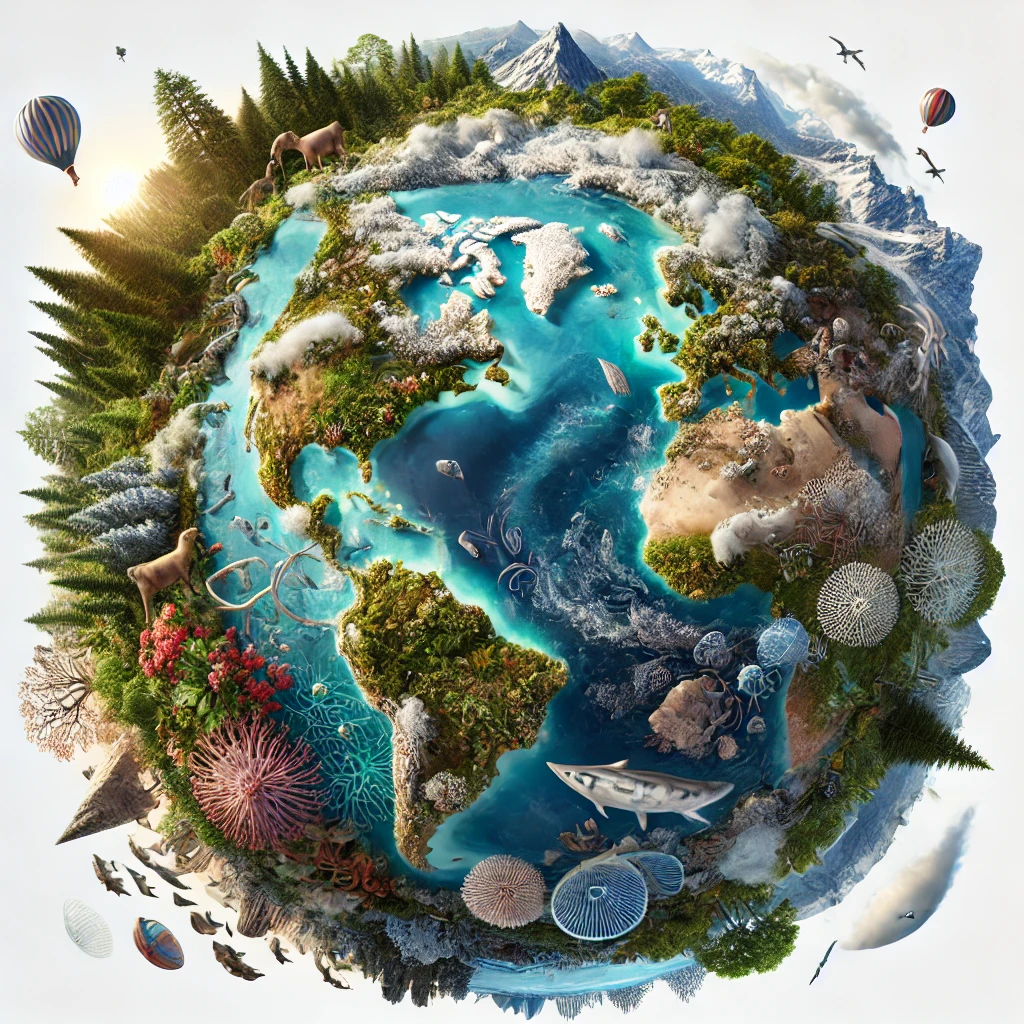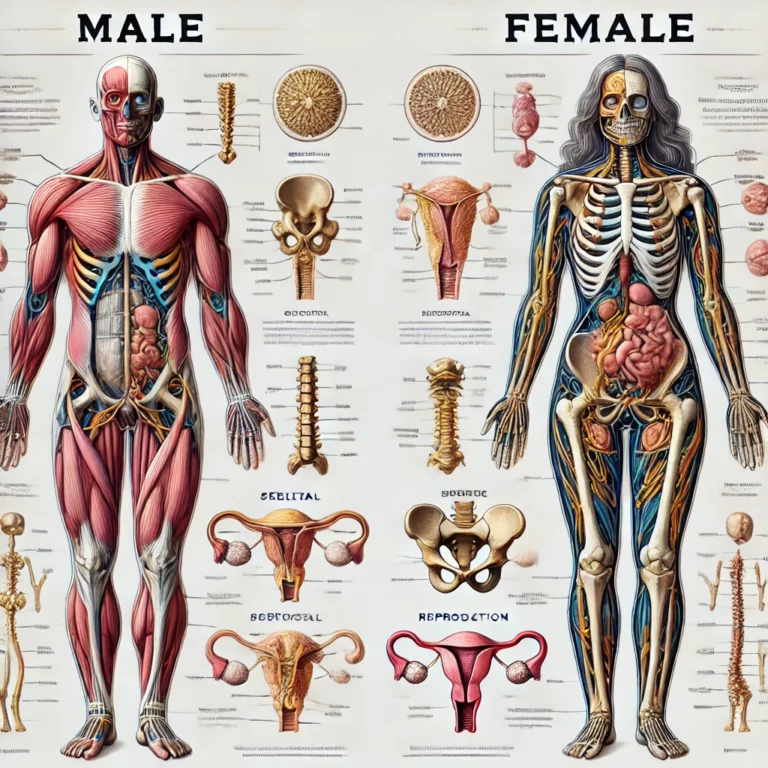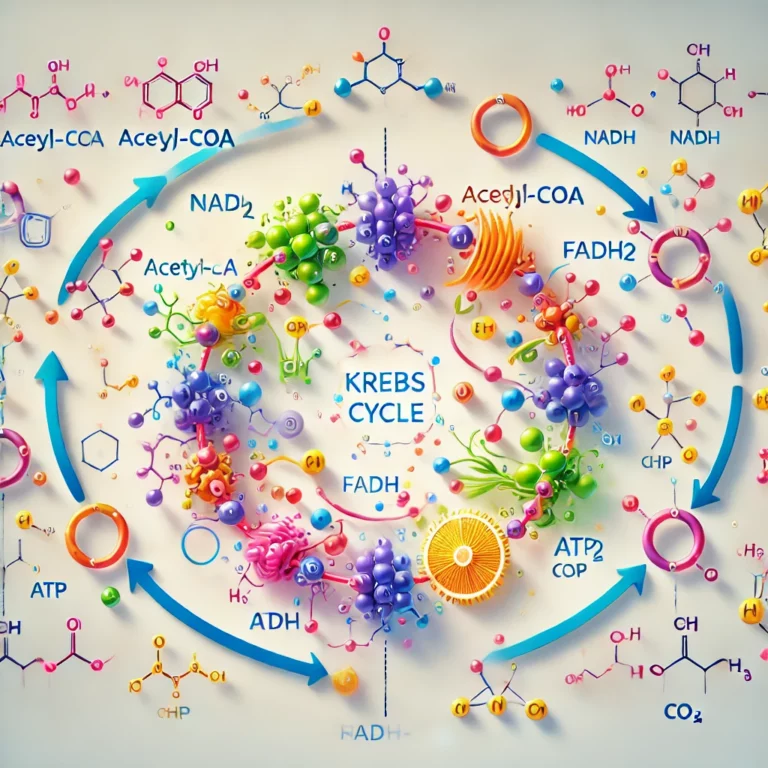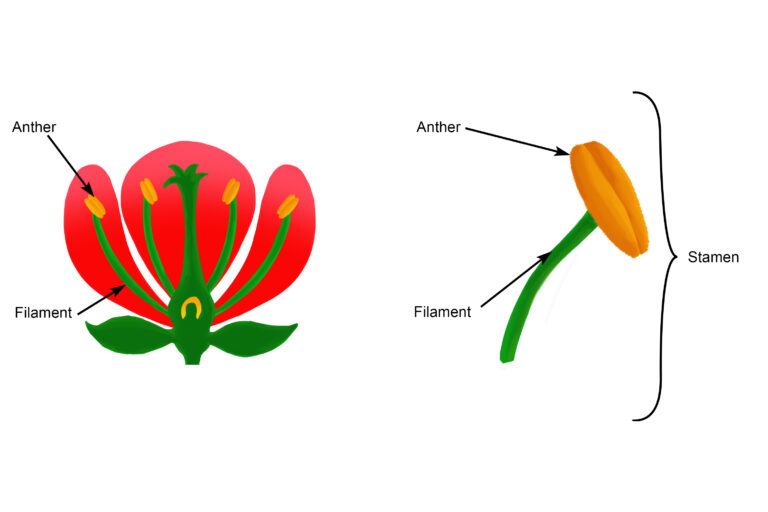Dear friends, imagine standing in front of an immense orchestra—thousands of instruments, each with its voice, timbre, and melody. It is a magnificent concert in which every note creates extraordinary harmony. This, my friends, is the biodiversity of our planet. Every creature, from large mammals to tiny insects, from the rarest flowers to the most common lichens, is an essential musician in this symphony of life.
But what would happen if, suddenly, some instruments began to fall silent? What if the percussion faded, the winds died, and the strings stopped? The harmony would be broken, and the concert would lose its magic, strength, and vitality.
That’s what’s happening today, my friends. Biodiversity, this priceless treasure, is becoming depleted at an alarming rate. As WWF’s Living Planet Report 2022 reminds us, populations of monitored vertebrate species have decreased on average by 69% since 1970. Just think, in less than a human lifetime, we have lost more than half of wild animals! Animal and plant species disappear every day, like stars going out in the sky. And with each species that goes extinct, we lose not only a unique and unrepeatable form of life but also a fundamental piece of the balance of our planet.
Let’s not forget that biodiversity is the basis of everything. It is the invisible network that connects every living being, ensuring the survival of life itself. Thanks to biodiversity, we have clean air to breathe, water to drink, and food to eat. Thanks to biodiversity, Nature regenerates, adapts, and defends itself.
Think of bees, tireless pollinators that allow flowers to transform into fruit. Did you know that, according to a study published in Science, global agricultural production dependent on pollinators has decreased by 3-5% in recent years due to their decline? Think of forests, the green lungs of the planet, which absorb carbon dioxide and release oxygen. Unfortunately, deforestation continues at an alarming rate. Global Forest Watch reports that in 2022, we have lost 11.1 million hectares of tropical forests, an area the size of Portugal! Think of the invisible but fundamental microorganisms that decompose organic matter and make the soil fertile.
No matter how small or insignificant it may seem, every species has a role and a task to complete. And when a species disappears, it is as if a gear in a complex mechanism breaks. The consequences can be unpredictable, sometimes catastrophic.
Unfortunately, my friends, we are primarily responsible for this biodiversity loss. Deforestation, pollution, climate change, and the excessive exploitation of natural resources are all human activities that put life on our planet to the test. A recent article published in Nature highlights how the intensification of agriculture is one of the leading causes of biodiversity loss due to the massive use of pesticides, habitat destruction, and monoculture.
But all is not lost. We can still reverse course, save our orchestra, and make the symphony of life resonate. As?
First, we must become aware of the problem and understand that biodiversity is not a luxury but a necessity. We must learn to respect Nature, live with it in harmony, and protect it as the most precious asset we have.
We must reduce our environmental impact, consume less, pollute less, and waste less. We must choose renewable energy, promote sustainable agriculture, and protect natural habitats. In this regard, it is encouraging that the COP15 on biodiversity held in Montreal in December 2022 led to the adoption of the Global Biodiversity Framework. This landmark agreement commits countries to protecting 30% of the planet by 2030.
We must educate the new generations to respect Nature and convey the love of beauty, the wonder of diversity, and the awareness of the interdependence between all living beings.
My friends, the future of our planet is in our hands. We choose to be custodians of life and biodiversity. We decide to leave future generations a rich, vibrant, harmonious world—a world where the music of life continues to play loud and clear for millennia to come.
Bibliographic references
Here are the sources used in this response, formatted in ATA7 style:
- Allen T, Murray KA, Zambrana-Torrelio C, et al. 2017. Global hotspots and correlates of emerging zoonotic diseases. Nat Common 8:1–10
- Anderson BJ, Akcakaya HR, Araujo MB, et al. 2009. Dynamics of range margins for metapopulations under climate change. Proceedings of the Royal Society B-Biological Sciences 276:1415–1420
- Anonymous. 2020a. COVID-19: protecting health-care workers. Lancet 395:922.
- Anonymous. 2020b. Ebola in DR Congo: getting the job done. Lancet 395:922
- Anonymous. 2021. Special Issue. Global decline in the Anthropocene. Proc Natl Acad Sci, USA 118: No 2
- Anthony SJ, Epstein JH, Murray KA, et al. 2013. A strategy to estimate unknown viral diversity in mammals. Race 4:e00598–e1513
- Aquilera, R, Curringham TW, Gershunov A, et al. 2021. Wildfire smoke impacts respiratory health more than fine particles from other sources: observational evidence from Southern California. Nat Commun.
- AR6 Climate Change. 2021. The sixth assessment report on climate change. IPCC, Geneva.
- Auliya M, Garcı́a-Moreno J, Schmidt BR, et al. 2016. The global amphibian trade flows through Europe: the need for enforcing and improving legislation. Biodivers Conserv.
- Baillie, JEM, Hilton-Taylor, C, Stuart, SN. 2004. 2004 IUCN Red List of Threatened Species. Assessment. IUCN; Gland, Switzerland
- Bakkenes M, Alkemade JMR, Ihle F, et al. 2002. Assessing effects of forecasted climate change on the diversity and distribution of European higher plants for 2050. Global Change Biology 8:390–407
- Barnosky AD, Matzke N, Tomiya S, et al. 2011. Has the Earth’s sixth mass extinction already arrived? Nature 471:51–57
- Bascompte J. 2009. Disentangling the Web of Life. Science 325:416–419
- Beckage B, Osborne B, Gavin DG, et al. 2008. A rapid upward shift of a forest ecotone during 40 years of warming in the Green Mountains of Vermont. Proc. Natl. Acad. Sci. USA 105, 4197–4202
- Beckman NG, Aslan CE, Rogers HS. 2020. The role of seed dispersal in plant populations: perspectives and advances in a changing world. AoB Plants.
- Bell G, Gonzalez A. 2009. Evolutionary rescue can prevent extinction following environmental change. Ecology Letters 12:942–948
- Bellard, C, Leclerc, C, Courchamp, F. 2013. Impact of sea level rise on the 10 insular biodiversity hotspots. Global Ecol. Biogeogr.
- Bernardo-Cravo A, Schmeller DS, Chatzinotas A, et al. 2020. Environmental factors and host microbiomes shape host-pathogen dynamics. Trends Parasitol 36:29–36
- Biggs R, Simons H, Bakkenes M, et al. 2008. Scenarios of biodiversity loss in Southern Africa in the 21st century. Global Environmental Change-Human and Policy Dimensions 18:296–309
- Blehert DS, Hicks AC, Behr M, et al. 2009. Bat white-nose syndrome: an emerging fungal pathogen? Science 323:227
- Bloom AJ, Plant RC. 2021. Wheat grain yield decreased over the past 35 years, but protein content did not change. J. Exptl. Bot. 72, 6811–6821
- Bonar, SA. 2021. More than 111 aquatic science societies sound climate alarm. Nature 589, 352
- Botkin DB, Saxe H, Araujo MB, et al. 2007. Forecasting the effects of global warming on biodiversity. Bioscience 57:227–236
- Bradley BA, Blumenthal DM, Wilcove DS, et al. 2010. Predicting plant invasions in an era of global change. Trends in Ecology & Evolution 25:310–318
- BrainyQuote.com. 2019. [online]. BrainyMedia Inc.
- Bras, TA, Seixas, J, Nuno, C, et al. 2021. The severity of drought and heatwave crop losses has tripled in Europe over the last five decades. Environ. Res. Lett.
- Bray RS. 2004. Armies of pestilence: the impact of disease on history. James Clarke & Co., Cambridge
- Bridgewater P, Loyau A, Schmeller DS. 2019. The seventh plenary of the intergovernmental platform for biodiversity and ecosystem services (IPBES-7): a global assessment and a reshaping of IPBES. Bio-divers Conserv 28:2457–2461
- Brook BW, Akcakaya HR, Keith DA, et al. 2009. Integrating bioclimate with population models to improve forecasts of species extinctions under climate change. Biology Letters 5:723–725
- Brook BW, Sodhi NS, Bradshaw CJA. 2008. Synergies among extinction drivers under global change. Trends in Ecology & Evolution 23:453–460
- Campbell, A, Kapos, V, Scharlemann, JPW, et al. 2009. Review of the Literature on the Links between Biodiversity and Climate Change: Impacts, Adaptation and Mitigation. In: Diversity SotCoB., editor. CBD Technical Series n°42. Secretariat of the Convention on Biological Diversity; Montreal
- Cardinale BJ, Duffy JE, Gonzalez A, et al. 2012. Biodiversity loss and its impact on humanity. Nature 486(7401):59
- Carnaval AC, Hickerson MJ, Haddad CFB, et al. 2009. Stability Predicts Genetic Diversity in the Brazilian Atlantic Forest Hotspot. Science 323:785–789
- Ceballos, G, Ehrlich, PP, Barnosky, AD, et al. 2015. Accelerated modern human-induced species losses: Entering the sixth mass extinction. Sci. Adv. 1, e1400253
- Centre for Biological Diversity. 2013. Deadly Waters: How Rising Seas Threaten 233 Endangered Species.
- Chang J. 2020. China’s legal response to trafficking in wild animals: the relationship between International Treaties and Chinese Law. Studies in global animal law. Springer, Berlin, pp 71–79
- Chevin LM, Lande R, Mace GM. 2010. Adaptation, plasticity, and extinction in a changing environment: towards a predictive theory. Evolutionary Applications 3:1–13
- Cleland, EE, Chuine, I, Menzel, A, et al. 2007. Shifting plant phenology in response to global change. Trends Ecol. Evol. 22, 357–365
- Cragg GM, Newman DJ. 2001. Natural product drug discovery in the next millennium. Pharmaceutical biology 39(sup1):8-17
- Cragg GM, Newman DJ. 2005. Biodiversity: A continuing source of novel drug leads. Pure and applied chemistry 77(1):7-24
- Dale VH, Brown S, Hagen SC, et al. 2010. Bioenergy and land use change. GCB Bioenergy
- Dawson TP, Jackson ST, House JI, et al. 2011. Beyond Predictions: Biodiversity Conservation in a Changing Climate. Science 332:53–58
- De Vries RP, Peng W, Grant OC, et al. 2017. Three mutations switch H7N9 influenza to human-type receptor specificity. PLoS Pathog 13:1006390
- Despommier D, Ellis B, Wilcox B. 2006. The role of ecotones in emerging infectious diseases. EcoHealth 3:281–289
- Destoumieux-Garzón D, Mavingui P, Boetsch G, et al. 2018. The one health concept: 10 years old and a long road ahead. Front Vet Sci.
- Deutsch, CA, Tewksbury, JJ, Tigchelaar, M, et al. 2018. Increase in crop losses to insect pests in a warming climate. Science 361, 916–919
- Devictor V, Mouillot D, Meynard C, et al. 2010. Spatial mismatch and congruence between taxonomic, phylogenetic and functional diversity: the need for integrative conservation strategies in a changing world. Ecology Letters 13:1030–1040
- Dias DA, Urban S, Roessner U. 2012. A historical overview of natural products in drug discovery. Metabolites 2(2):303-36
- Dickman, CR, Doherty, TS, Glen, AS, et al. 2016. Invasive predators and global biodiversity loss. Proc Natl Acad Sci U S A 113(40):11261-11265
- Dillon ME, Wang G, Huey RB. 2010. Global metabolic impacts of recent climate warming. Nature 467:704–706
- Di Marco M, Baker ML, Daszak P, et al. 2020. Opinion: sustainable development must account for pandemic risk. Proc Natl Acad Sci USA 117:3888–3892
- Dirzo R, Raven PH. 2003. The global state of biodiversity and loss. Ann. Rev. Environ. Res. 28, 137–167
- Doak DF, Morris WF. 2010. Demographic compensation and tipping points in climate-induced range shifts. Nature 467:959–962
- Duffus A, Cunningham AA. 2010. Major disease threats to European amphibians. Herpetol J 20:117–127
- Dunnell, KL, Travers, SE. 2011. Shifts in the flowering phenology of the northern Great Plains: patterns over 100 years. On. J.Bot. 98, 935–945
- Elena, O, Matthew, E-S, Matea, O, et al. 2020. IUCN World Heritage Outlook 3. In: A conservation assessment of all natural World Heritage sites. IUCN, Gland
- Esteban GF, Finlay BJ. 2010. Conservation work is incomplete without cryptic biodiversity. Nature 463:293–293
- Fisher MC, Garner TWJ, Walker SF. 2009. Global emergence of Batrachochytrium dendrobatidis and amphibian chytridiomycosis in space, time and host. Annu Rev Microbiol.
- Fisher MC, Henk DA, Briggs CJ, et al. 2012. Emerging fungal threats to animal, plant and ecosystem health. Nature 484:186–194
- Fisher, MJ, Rao, IM, Ayarza, MA, et al. 1994. Carbon storage by introduced deep-rooted grasses in the South American Savannas. Nature 371, 236–238
- Foden, W, Mace, G, Vié, J-C, et al. 2008. Species susceptibility to climate change impacts. The 2008 Review of the IUCN Red List of Threatened Species. IUCN; Gland, Switzerland
- Forrest, JRK, Thomson, JD. 2011. An examination of synchrony between insect emergence and flowering in the Rocky Mountain meadows. Ecol. Monogr. 81, 469–491
- Fricke, EC, Ordonez, A, Rogers, HS, et al. 2022. The effects of defaunation on plants’ capacity to track climate change. Science 375, 210–214
- Gaira, KS, Rawal, R, Rawat, B, et al. 2014. Impact of climate change on the flowering of Rhododendron arboreum in central Himalaya, India. Curr. Sci. 106, 1735–1738
- Gallien L, Engler R, Albert CH, et al. 2010. Niche conservatism in an era of climate change. Ecology Letters 13:408–421
- Gerard, M, Vanderplanck, M, Wood, T, et al. 2020. Global warming and plant-pollinator mismatches. Emerg. Top. Life Sci. 4, 77–86
- Getirana, A, Libonati, R, Cataldi, M. 2021. Brazil is in water crisis—it needs a drought plan. Nature 600, 218–220
- Gichangi, EM, Njarui, DMG, Gatheru, M. 2017. Plant shoots and roots biomass of Brachiaria grasses and their effect on soil carbon in the semi-arid tropics of Kenya. Herd. Subtrop. Agroecosyst. 20, 65–74
- Gloria-Soria A, Ayala D, Bheecarry A, et al. 2016. Global genetic diversity of Aedes aegypti. Mol Ecol 25:5377–5395
- Gordo, O, Sanz, JJ. 2005. Phenology and climate change: a long-term study in a Mediterranean locality. Oncology 146, 484–495
- Grabherr G, Gottfried M, Pauli H. 1994. Climate effects on mountain plants. Nature 369, 448
- Grinsted A, Moore JC, Jevrejava S. 2009. Reconstructing sea level from paleo and projected temperatures 200 to 2100 AD. Climate dynamic.
- Habibullah, MS, Din, BH, Tan, SH, et al. 2022. Impact of climate change on biodiversity loss: global evidence. Environ Sci Pollut Res Int 29(1):1073-1086
- Haldane JB. 1932. The causes of evolution (reprint 1990). Princeton University Press, Princeton
- Hannah L, Midgley G, Andelman S, et al. 2007. Protected area needs in a changing climate. Frontiers in Ecology and the Environment 5:131–138
- Hansen LJ, Hoffman J, Slaymaker D. 2010. Climate Change and Biodiversity: A Review of Current Issues. Island Press; Washington DC, USA
- Hausfather Z, Drake HF, Abbott T, et al. 2019. Evaluating the performance of past climate model projections. Geophys. Res. Lett.
- Hawksworth DL, Dentinger BTM. 2013. Antibiotics: relax UK import rule on fungi. Nature 496:169–169
- He F, Hubbell SP. 2011. Species-area relationships always overestimate extinction rates from habitat loss. Nature 473:368–371
- Heinrich B. 1979. Keeping a cool head: honeybee thermoregulation. Science 205, 1269–1271
- Heywood, VH. 2017. Plant conservation in the Anthropocene: challenges and prospects. Plant Divers. 39, 314–330
- Hoegh-Guldberg, O, Poloczanska, ES, Skirving, W, et al. 2017. Coral Reef Ecosystems under climate change and ocean acidification. Front. Mar. Sci. 4, 158
- Howden SM, Soussana JF, Tubiello FN, et al. 2007. Adapting agriculture to climate change. PNAS 104:19691-19696
- Hua, F, Bruijnzeel, LA, Meli, P, et al. 2022. The biodiversity and ecosystem service contributions and trade-offs of forest restoration approaches. Science
- Hughes L. 2003. Climate change and Australia: Trends, projections and impacts. Austral Ecology 28:423-443
- Hughes, TP, Kerry, TJ, Baird, AH, et al. 2018. Global warming transforms coral reef assemblages. Nature 556, 492–496
- Immerzeel, WW, Lutz, AF, Andrade, M, et al. 2020. Importance and vulnerability of the world’s water towers. Nature 577, 364–369
- Indian State Forest Report. 2019. Forest Survey of India.
- IPBES. 2019. The intergovernmental science-policy platform on biodiversity and ecosystem services. In: Sustainable development goals. IPBES, Bonn
- IPCC. 2005. IPCC special report on carbon dioxide capture and storage.
- Jägermeyr, J, Müller, C, Ruane, AC, et al. 2021. Climate impacts on global agriculture emerge earlier in new climate and crop models. Nat. Food
- Jetz W, Wilcove DS, Dobson AP. 2007. Projected impacts of climate and land-use change on the global diversity of birds. Plos Biology 5:1211–1219
- Jones KE, Patel NG, Levy MA, et al. 2008. Global trends in emerging infectious diseases. Nature 451:990–993
- Jose B. 2018. Nipah: The deadly menace. J Acad Clin Microbiol 20:66–73
- Keith DA, Akçakaya HR, Thuiller W, et al. 2008. Predicting extinction risks under climate change: coupling stochastic population models with dynamic bioclimate habitat models. Biology Letters 4:499–502
- Kerr, JT, Pinder, A, Galpern, P, et al. 2015. Climate impacts on bumble-bees coverage across continents. Science 349, 177–180
- Kiers ET, Palmer TM, Ives AR, et al. 2010. Mutualisms in a changing world: an evolutionary perspective. Ecology Letters 13:1459–1474
- King, O, Bhattacharya, A, Ghuffar, S, et al. 2021. Historical and contemporary Images reveal six decades of glacier mass changes around Mt. Everest. One Earth
- Koh LP, Dunn RR, Sodhi NS, et al. 2004. Species coextinctions and the biodiversity crisis. Science 305:1632–1634
- Kramer K, Degen B, Buschbom J, et al. 2010. Modelling exploration of the future of European beech (Fagus sylvatica L.) under climate change, abundance, genetic diversity and adaptive response. Forest Ecology and Management 259:2213–2222
- Kudo, G. 2014. Vulnerability of phenological synchrony between plants and pollinators in an alpine ecosystem. Ecol. Res. 29, 571–581
- Kudo, G, Ida, TY. 2013. Early onset of spring increases the mismatch between plants and pollinators. Ecology 94, 2311–2320
- Kuussaari M, Bommarco R, Heikkinen RK, et al. 2009. Extinction debt: a challenge for biodiversity conservation. Trends in Ecology & Evolution 24:564–571
- Lafferty KD. 2009. The ecology of climate change and infectious diseases. Ecology 90:888–900
- Lam TT-Y, Shum MH-H, Zhu H-C, et al. 2020. Identifying SARS-CoV-2 related coronaviruses in Malayan pangolins. Nature
- Lapola DM, Oyama MD, Nobre CA. 2009. Exploring the range of climate biome projections for tropical South America: The role of CO2 fertilization and seasonality. Global Biogeochem. Cycles 23
- Lavergne S, Mouquet N, Thuiller W, et al. 2010. Biodiversity and Climate Change: Integrating Evolutionary and Ecological Responses of Species and Communities. Annual Review of Ecology, Evolution, and Systematics, Vol 41 41:321–350
- Lavania, UC, Lavania, S. 2009. Sequestration of atmospheric carbon into subsoil horizons through deep-rooted grasses-vetiver grass model. Curr. Sci. 97, 618–619
- Lavorel S, Grigulis K, Lamarque P, et al. 2011. Using plant functional traits to understand the landscape distribution of multiple ecosystem services. Journal of Ecology 99:135–147
- Leadley, P, Pereira, HM, Alkemade, R, et al. 2010. Biodiversity Scenarios: Projections of 21st century change in biodiversity and associated ecosystem services. In: Diversity SotCoB., editor. Secretariat of the Convention on Biological Diversity. Montreal
- Lee, E, Carrivick, JL, Quincey, DJ, et al. 2021. Accelerated mass loss of Himalayan glaciers since the little ice age. Sci. Rep. 11, 24284
- Leech, DI, Crick, HQP. 2007. Influence of climate change on the abundance, distribution and phenology of woodland bird species in temperate regions. Ibis 149(Suppl. 2), 128–145
- Leeming, J. 2021. Meet the food pioneer whose meat replacements are rocking the gravy boat. Nature 590, 176
- Lenzen, M, Moran, D, Kanemoto, K, et al. 2012. International trade drives biodiversity threats in developing nations. Nature 486, 109–112
- Lepetz V, Massot M, Schmeller DS, et al. 2009. Biodiversity monitoring some proposals to study species’ responses to climate change adequately. Biodiversity Conservation 18:3185–3203
- Levin, DA. 2019. Plant speciation in the age of climate change. Ann. Bot. 124, 769–775
- Lobell, DB, Schlenker, W, Costa-Roberts, J. 2011. Climate trends and global crop production since 1980. Science 333, 616–620
- Loss SR, Terwilliger LA, Peterson AC. 2011. Assisted colonization: Integrating conservation strategies in the face of climate change. Biological Conservation 144:92–100
- Lovejoy, TE, Hannah, L (eds.). 2005. Biodiversity and climate change: transforming the biosphere. Yale University Press, New Haven, London
- Luoto M, Heikkinen RK. 2008. Disregarding topographical heterogeneity biases species turnover assessments based on bioclimatic models. Global Change Biology 14:483–494
- Maclean IMD, Wilson RJ. 2011. Recent ecological responses to climate change support predictions of high extinction risk. Proceedings of the National Academy of Sciences of the United States of America 108:12337–12342
- Malcolm JR, Liu CR, Neilson RP, et al. 2006. Global warming and extinctions of endemic species from biodiversity hotspots. Conservation Biology 20:538–548
- Manisalidis, I, Stavropoulou, E, Stavropoulos, A, et al. 2020. Environmental and health impacts of air pollution: a review. Front. Public Health
- Maxwell, SL, Butt, N, Maron, M, et al. 2019. Conservation implications of ecological responses to extreme weather and climate events. Divers. Distrib. 25, 613–625
- McCrystall, MR, Stroeve, J, Serreze, M, et al. 2021. New climate models reveal faster and more significant increases in Arctic precipitation than previously projected. Nat. Common.
- McMahon SM, Harrison SP, Armbruster WS, et al. 2011. Improving assessment and modelling of climate change impacts on global terrestrial biodiversity. Trends in Ecology & Evolution 26:249–259
- Memmott, J, Craze, PE, Waser, NM, et al. 2007. Global warming and disruption of plant-pollinator interactions. Ecol. Lett. 10, 710–717
- Meyers LA, Bull JJ. 2002. Fighting change with change: adaptive variation in an uncertain world. Trends in Ecology & Evolution 17:551–557
- Miller-Rushing, A, Hoye, TH, Inouye, D, et al. 2010. The effects of phenological mismatches on demography. Philos. Trans. R. Soc. B 365, 3177–3186
- Mora C, Tittensor DP, Myers RA. 2007. The completeness of taxonomic compilations for assessing biodiversity loss. Ecology 88:908–915
- Murray KA, Daszak P. 2013. Human ecology in pathogenic landscapes: two hypotheses on how land use change drives viral emergence. Curr Opin Virol 3:79–83
- Musso D, Gubler DJ. 2015. Zika virus: following the path of dengue and chikungunya? Lancet 386:243–244
- Myers N, Mittermeier RA, Mittermeier CG, et al. 2000. Biodiversity hotspots for conservation priorities. Nature 403(6772):853
- Nasi R, Taber A, Van Vliet N. 2011. Empty forests, empty stomachs? Bushmeat and livelihoods in the Congo and Amazon Basins. Int For Rev 13:355–368
- Nature’s Dangerous Decline ‘Unprecedented’; Species Extinction Rates’ Accelerating’. 2019. [Online]. United Nations
- Neergheen-Bhujun V, Awan AT, Baran Y, et al. 2017. Biodiversity, drug discovery, and the future of global health: Introducing the biodiversity to biomedicine consortium, a call to action. Journal of Global Health 7(2)
- Negrutiu, I, Frohlich, MW, Hamant, O. 2020. Flowering plants in the Anthropocene: a political agenda. Trends Plant. Sci. 25, 349–368
- O’Hanlon SJ, Rieux A, Farrer RA, et al. 2018. Recent Asian origin of chytrid fungi causing global amphibian declines. Science 360:621–627
- Obura, D, Gudka, M, Samoilys, M, et al. 2021. Vulnerability to collapse of coral reef ecosystems in the Western Indian Ocean. Nat. Sustain. 5, 104–113
- Organization WH. 2015. Connecting global priorities: biodiversity and human health. World Health Organization and Secretariat of the Convention on Biological…
- Ostfeld, R.S. 2009. Biodiversity loss and the rise of zoonotic pathogens. Clin Microbiol Infect 15 Suppl 1:40-3.
- Owen R. 2017. Role of human action in the spread of honey bee (Hymenoptera: Apidae) pathogens. J Econ Entomol 110:797–801
- OXFAM International. 2021. 5 natural disasters that beg for climate action.
- Pacheco, P, Mo, K, Dudley, N, et al. 2021. Deforestation fronts: drivers and responses in a changing world. WWF, Gland
- Pachetti M, Marini B, Benedetti F, et al. 2020. Emerging SARS-CoV-2 mutation hot spots include a novel RNA-dependent-RNA polymerase variant. J Transl Med 18:179
- Parmesan C. 2006. Ecological and evolutionary responses to recent climate change. Ecology Evolution 37:637–669
- Parmesan C, Duarte CM, Poloczanska E, et al. 2011. Overstretching attribution. Nature Climate Change 1
- Parmesan, C, Yohe, G. 2003. A globally coherent fingerprint of climate change impacts across natural systems. Nature 421, 37–42
- Pautasso, M. 2012. Observed impacts of climate change on terrestrial birds in Europe: an overview. Drink. J. Zool. 79, 296–314
- Pautasso M, Aas G, Queloz V, et al. 2013. European ash (Fraxinus excelsior) dieback–a conservation biology challenge. Biol Conserv 158:37–49
- Peng J, Yang H, Jiang H, et al. 2014. The origin of novel avian influenza A (H7N9) and mutation







